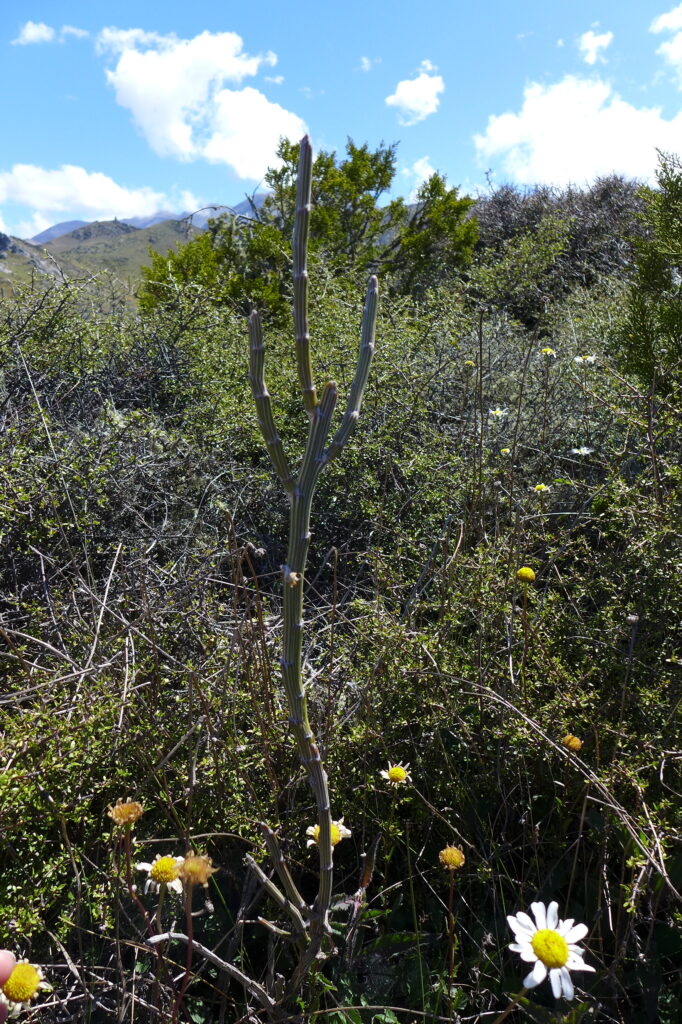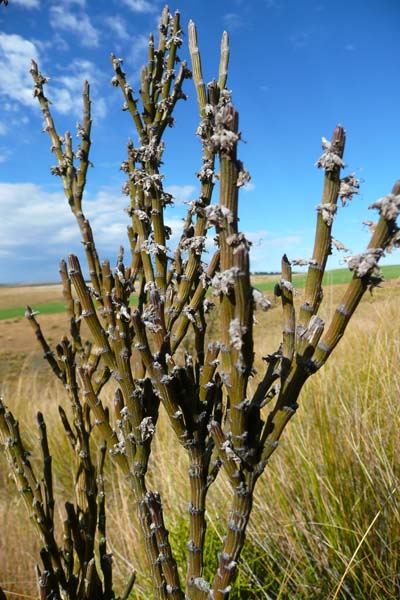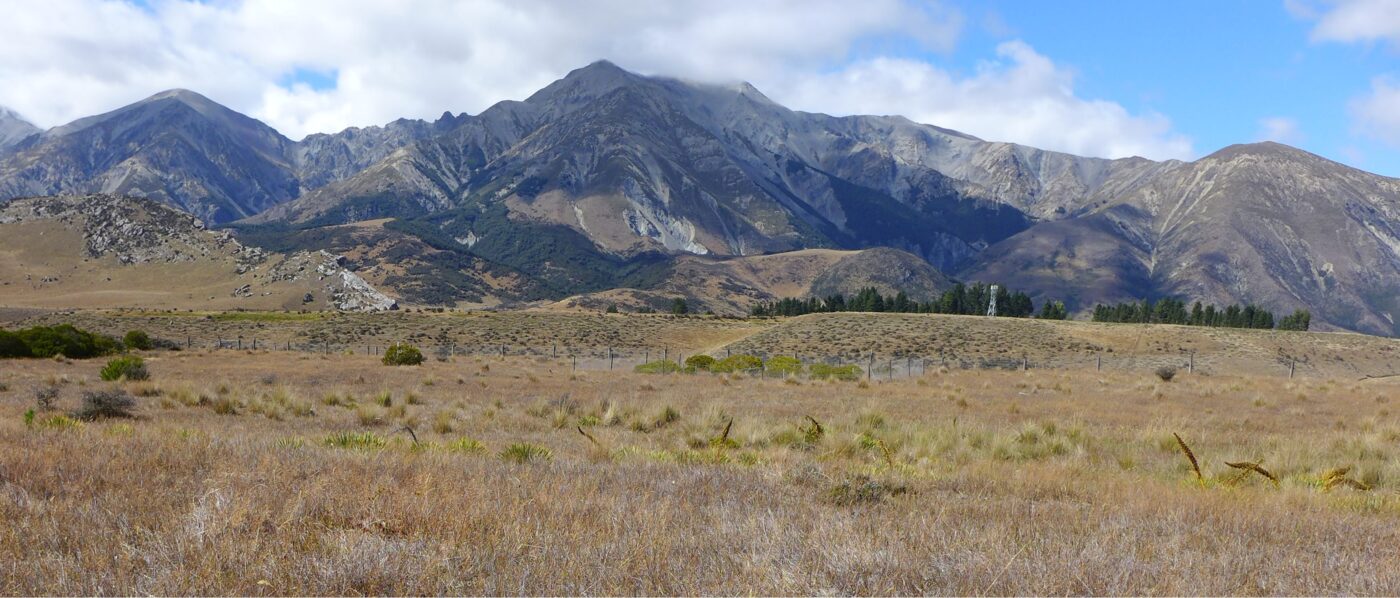Hares are an underappreciated – and understudied – threat to our native ecosystems. They target their favoured food plants and can eliminate the most palatable species from a site, even when they are at low densities. New Zealand’s native brooms (genus Carmichaelia; not to be confused with the invasive Scotch broom, Cytisus scoparius) are a tasty treat for hares and other plant-eating mammals such as rabbits, sheep and cattle. Many native broom species are threatened or at-risk of extinction, and hares are one of the main threats to their survival.
In January 2025 I made the exciting discovery of four small coral broom (Carmichaelia crassicaulis subsp. crassicaulis) plants at Enys Scientific Reserve in Castle Hill Basin, Canterbury. It was the first time this species, which is at risk of extinction and classified as Nationally Vulnerable, had been recorded at the reserve. In February 2025, I found another coral broom plant about 50 m from the first four individuals.

Coral broom grows at similar sites such as Ben Dhu Scientific Reserve near Twizel, so it wasn’t unexpected in this habitat. However, botanists have been visiting what is now Enys Scientific Reserve since 1974, and none have observed coral broom. It’s a distinctive plant, so not easily overlooked.

The nearest coral broom plants to Enys Scientific Reserve are some 10 km away, near Lake Lyndon and at Porters Pass. Although seeds have remarkable and unexpected ways of getting around (e.g. stuck to birds’ feathers or feet), the most likely explanation is that the seeds germinated from a soil seed bank at Enys Scientific Reserve. In the wild, long-lived seeds can survive in the soil and germinate when conditions are right – thus forming a soil seed bank. Like other members of the pea family (Fabaceae), native broom seeds can remain viable for decades. The previous longevity record for viability of native broom seeds was 24 years.
I estimate that the coral broom plants at Enys Scientific Reserve are less than ten years old, based on their size and apparent absence during a comprehensive site survey I undertook in 2018. This suggests that the seeds may have survived in the soil for 40–50 years, or perhaps even longer. This would significantly extend the previous (minimum) estimate of 17 years seed longevity for coral broom based on herbarium specimens. This is especially impressive for seeds in the wild, which are subject to the vagaries of weather and attack by insects and pathogens.
So why has coral broom (re)appeared now? Probably because hares have been effectively excluded from the reserve only recently. The reserve was fenced to exclude stock in 1978 and hares in 1988, but the ‘hare-proofing’ was not entirely effective. To try and address that, the fence was extended vertically around 2005 but hares continued to breach it. I regularly spied hares inside the fence during my earlier visits from 2011 to 2013. By 2014, Department of Conservation threatened plant ranger Danny Kimber had fixed gaps in the fence to fully hare-proof it and removed the last hare in the reserve. Since then, the reserve has been hare-free – helped by a lack of deep snow in recent years, which previously allowed hares to hop over the fence in winter! An unexpected silver lining to climate change.

A recent and marked increase in the abundance of golden speargrass (Aciphylla aurea) – another favoured food of hares – at Enys Scientific Reserve also points towards hares as the culprit behind coral broom’s absence. The (re)appearance of coral broom and an increase in golden speargrass bodes well for future vegetation recovery at Enys Scientific Reserve – as long as hares (and wallabies in future) continue to be excluded.